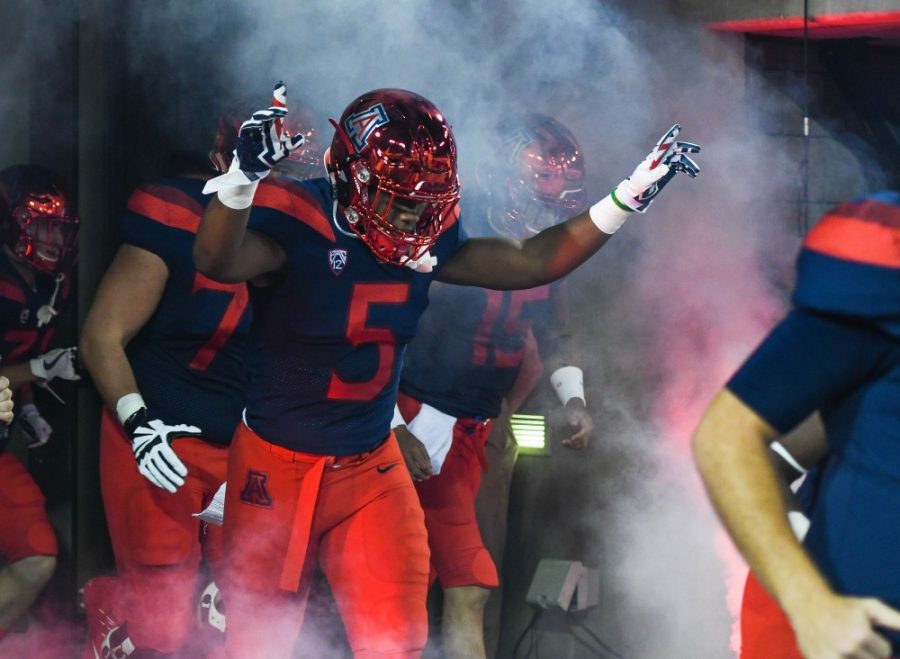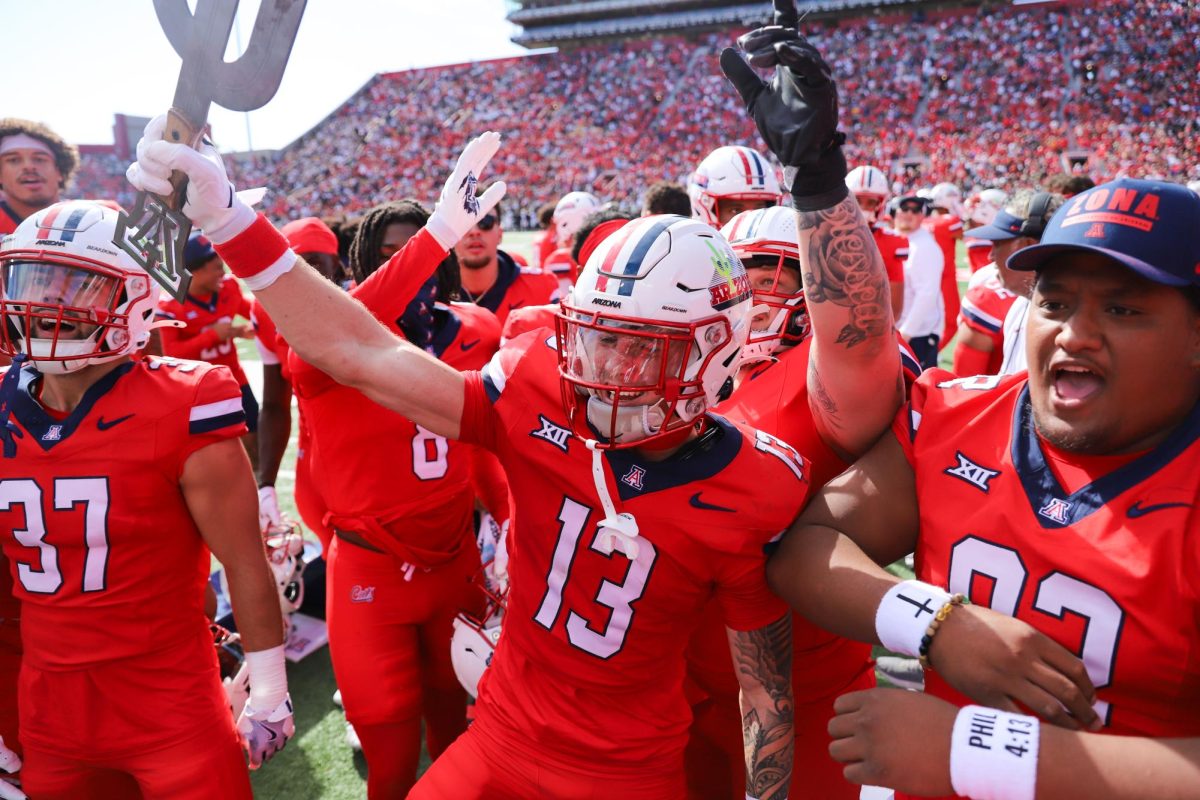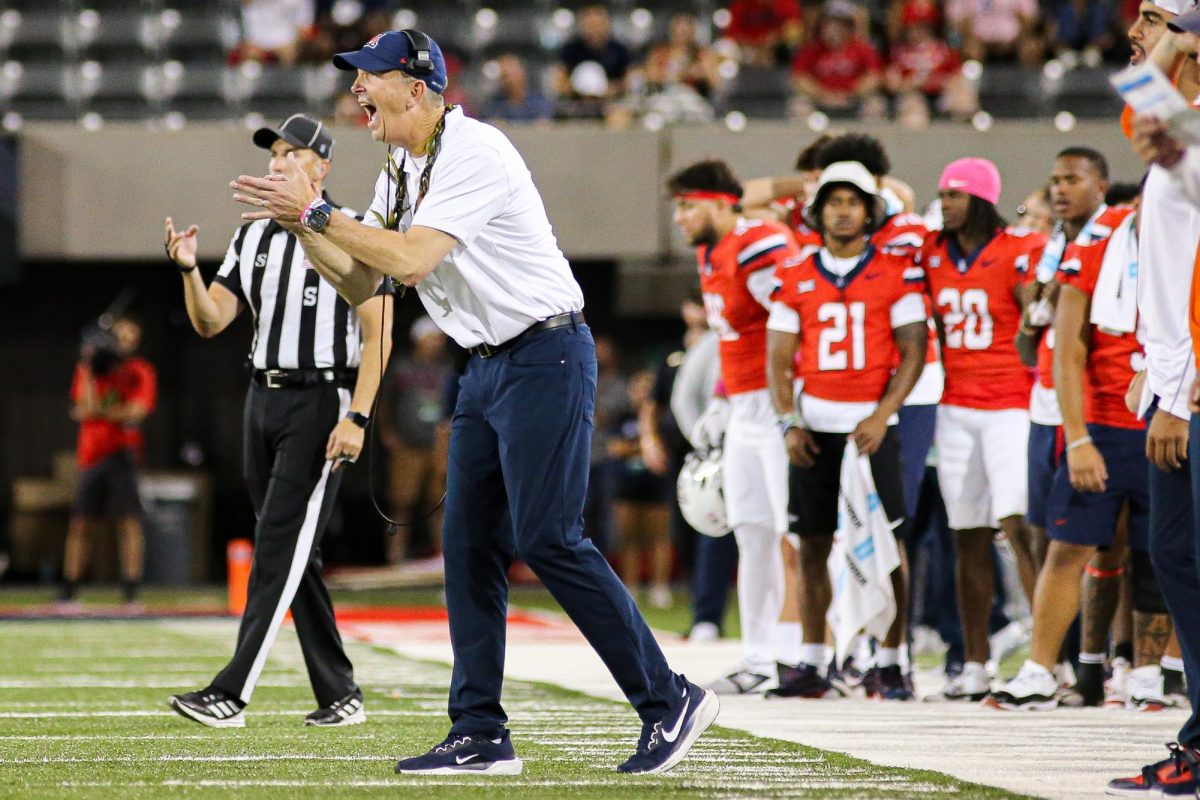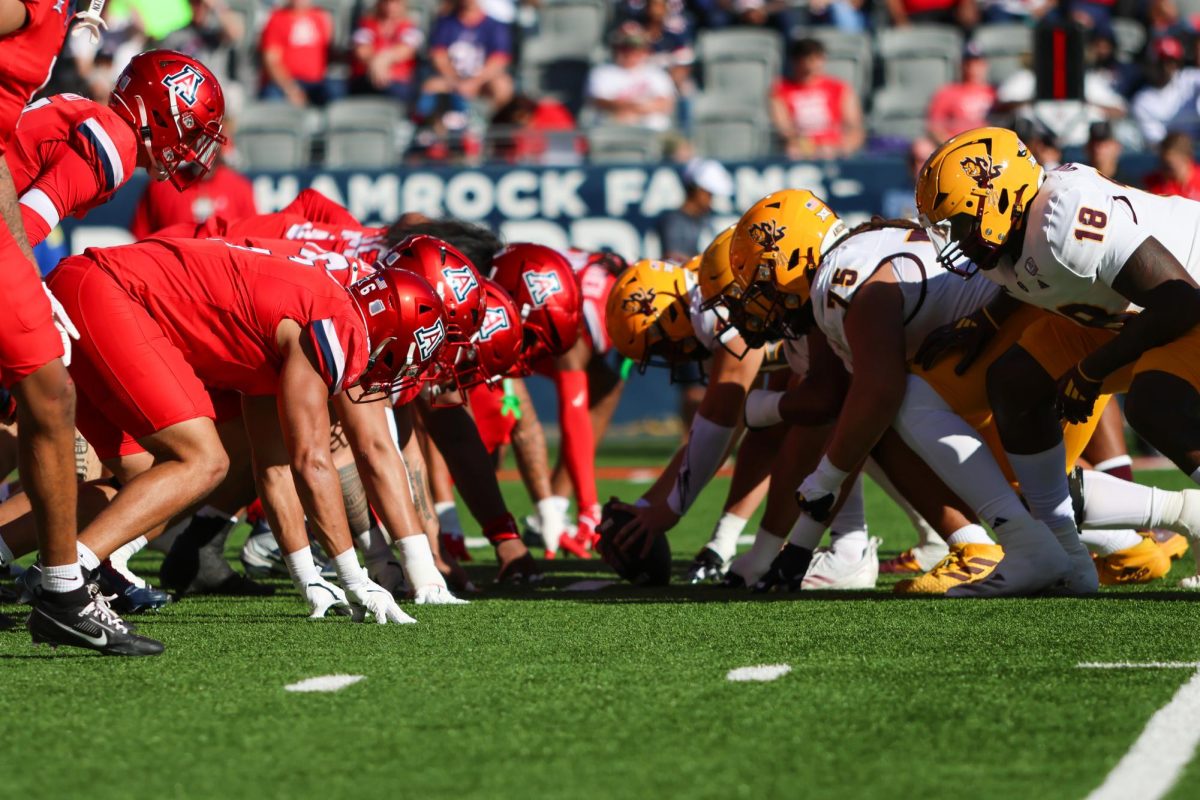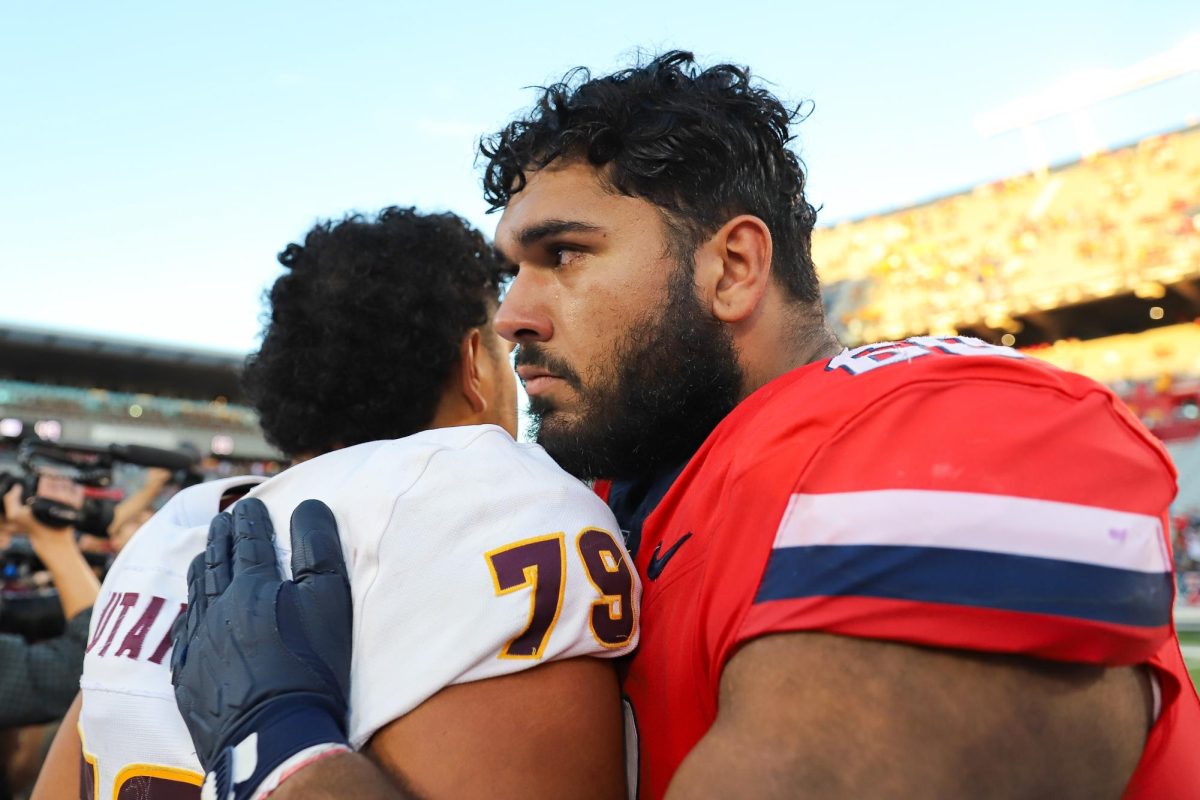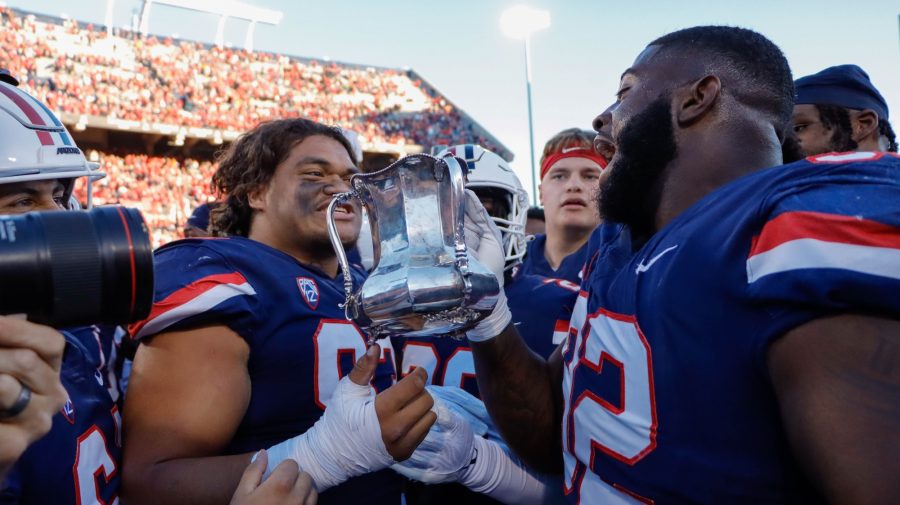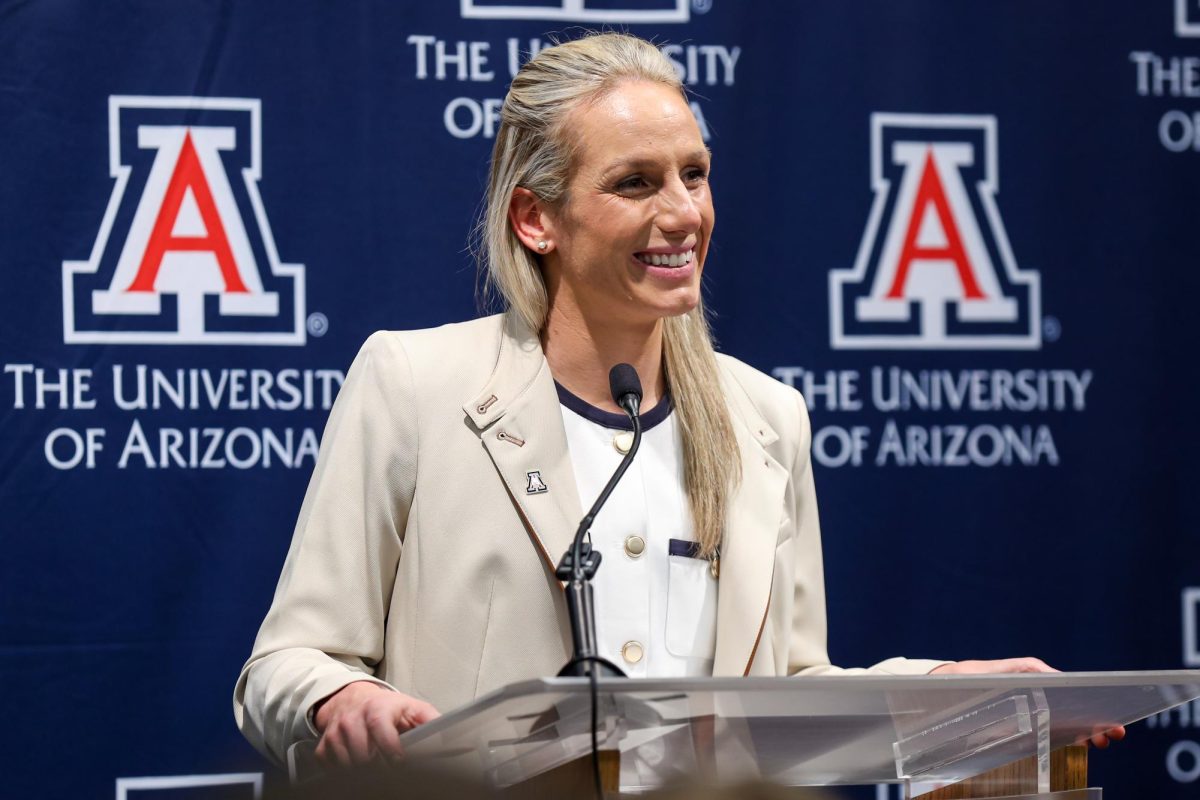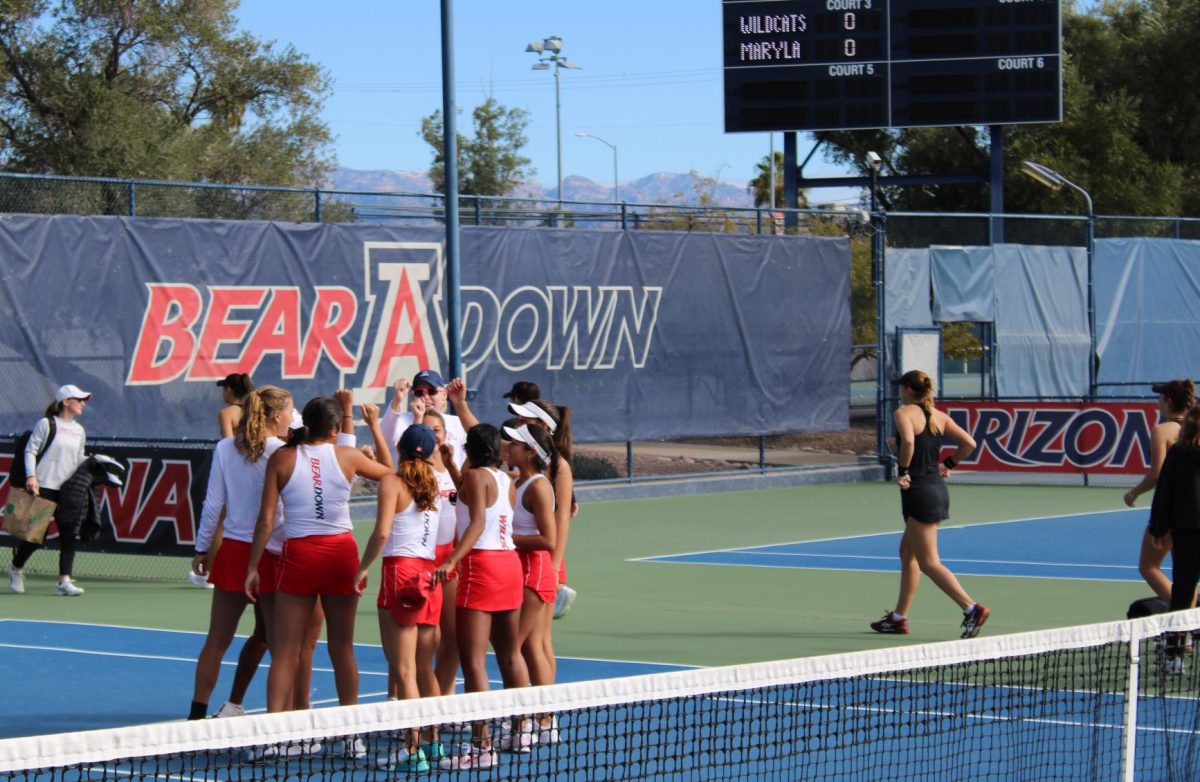In 1987, Dick Tomey accepted the football head coach position at the University of Arizona. At 48 years old, the Indiana native inherited one of the more promising programs in all of college football. Just one year prior, the Wildcats defeated North Carolina in the Aloha Bowl, capping off a 9-3 record and earning the school’s first postseason victory.
No one could have predicted then that Tomey would resign on his own terms 13 years later as perhaps Arizona’s all-time greatest leader.
Before being named Pac-10 Coach of the Year in 1992 and leading the Wildcats to a memorable 12-1 campaign in 1998, Tomey spent the previous 10 years away from the mainland, instilling a culture of success in the Hawaii Rainbow Warriors.
In the summer of 1977, Tomey fit the bill for what the Rainbow Warriors were searching for in their next head coach candidate. He traded out his position as an assistant at UCLA in Westwood to take the reins nearly 3,000 miles away in a place that was just beginning to appreciate football.
Tomey’s arrival launched a new era for the Rainbow Warriors. Within three years, he transformed the program, logging back-to-back six-win seasons before cracking the Associated Press Top 20 ranking in 1981 for the first time in school history. A 17-5 record highlighted his tenure at Hawaii over the 1980-81 seasons.
The Dick Tomey-era at the University of Hawaii produced the Rainbow Warriors’ first AP first-team All-American, Al Noga, in 1981. Tomey was also awarded WAC Coach of the Year honors that same season.
When Tomey arrived in Tucson in 1987, he brought the same passion for coaching that had propelled his teams at Hawaii to new heights. He also managed to keep intact several key relationships with potential recruits, specifically in the Polynesian community.
Tomey thrived in Tucson, Arizona from the fall of 1987 until his resignation at the conclusion of the 2000 season. He finished his Pac-10 coaching career with 95 wins — most all-time at the UA — and four bowl victories. Tomey’s Wildcats reached double-digit win totals on two separate occasions and defeated the defending National Champion Nebraska Cornhuskers in the 1998 Holiday Bowl. He coached 20 All-Americans, 43 All-Pac-10 first-team selections and five first-round draft picks. His star-studded cast of defenders took the nation by storm in the mid-1990s, earning the nickname “Desert Swarm.” For all of these reasons and more, Tomey is largely considered the best football coach in Arizona school history.
In September 2017, Tomey resurfaced in the desert, this time for seemingly unrelated news. He had published a book. Rather than giving a glimpse into his own journey, which began in Bloomington, Indiana and spread far across the mainland, Tomey chose to tell the story of his birthplace in college football: the big island.
“Rise of the Rainbow Warriors: Ten Unforgettable Years of University of Hawaii Football” is Tomey’s recollection of his time spent leading a group of men that proudly carried the banner of the Rainbow Warriors. He looks back on his first, and last, moments at the University of Hawaii and all of the changes that occurred in between. Tomey reminds us there is so much more to life than just playing football.
The legacy Tomey built at the UA seems more pertinent now than ever. In the wake of the sexual harassment investigation surrounding ex-head football coach Rich Rodriguez, Arizona Director of Athletics Dave Heeke made a big-step in the right direction by hiring former Texas A&M head coach Kevin Sumlin.
Sumlin’s celebrity impact and turnover amongst the staff yielded results almost immediately.
For the first time since the Mike Stoops era, the Wildcats have aggressively attacked the Polynesian pipeline. Contrary to the recruiting efforts of Rodriguez and his position coaches, Arizona seems to be once again focusing on acquiring a slew of American Samoan prospects.
Within a month of his arrival, Sumlin and his staff had extended offers to several of the top Polynesian playmakers. A familiar name around Tucson happened to be communicating with the Wildcats’ new head coach.
Although Tomey wasn’t seen back at his old stomping grounds when Sumlin was formally introduced as Arizona’s new head coach in January (he was most likely paddle boarding in Hawaii.), Sumlin still managed to reach out to Tomey. Wisely, the two discussed the nature of the program and Tomey’s own experiences recruiting from the desert. Sumlin said they’ve known each other for quite some time, but until now he hadn’t longed for Tomey’s advice.
Both Wildcat head coaches, new and old — one the winningest in UA history and the other just now getting used to the warm winters in Tucson — agreed on one thing: This is a place where championships can be won.
As long as Tomey’s influence continues to speak to Sumlin, even from 3,000 miles away, the future of Arizona football is looking up.
On March 10–11, Tomey will return to Tucson to take part in the Tucson Festival of Books, where he will share his insights about his book “Rise of the Rainbow Warriors: Ten Unforgettable Years of University of Hawaii Football.”
Follow Rob Kleifield on Twitter



